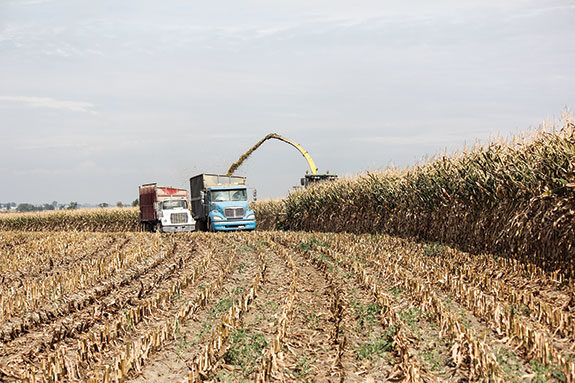Microbial forage inoculants are the principal type of silage additive in the U.S. These products supply additional lactic acid bacteria to the population naturally found on crops, aiming to enhance the fermentation efficacy and retain as much as possible of the original nutrients and dry matter. There is a wide range of formulations available, from products containing only a single bacterial strain to a blend of several different strains and species.
These bacteria strains are normally isolated from crops or silages and are selected based on their efficiencies of producing certain fermentation acids and capacities of growing fast under different conditions (e.g., pH, temperature and moisture).The mode of action of these microbes can be divided into two classes: fermentation enhancers and inhibitors of aerobic spoilage. The former group makes fermentation more efficient by fast production of lactic acid, which leads to a rapid pH drop that is vital to inhibit the plant’s enzymes – especially proteases – as well as undesirable bacteria such as clostridia and enterobacteria.
The aerobic spoilage inhibitors mainly contain Lactobacillus buchneri, a bacterium that enhances the silage stability after exposure to air by reducing yeast levels due to the production of acetic acid.
There are several factors that influence the efficacy of microbial inoculation, such as the type and level of the natural population of micro-organisms and the sugar content of the forage crop to be ensiled. However, nothing is more important for successful inoculation than the viability of the microbes.
Inadequate storage kills bugs
The commercial products available are normally composed of freeze-dried fermentation products added to a carrier (e.g., a sugar, calcium carbonate).
Keeping moisture and heat from these products is important since they can kill the bacteria; thus, ideal storage and handling is imperative for stability of the product and viability of the bacteria. Manufacturer’s guidelines for storage must be followed and range from “store in a cool, dry place” to “refrigeration recommended.”
Open packages must be completely used, and those remaining from the end of season must be refrigerated in a container that can keep both moisture and air away from the product.
There are still situations when the inoculant is left in the sun during the time of ensiling or opened packages from the previous season or expired products will still be used; these situations result in death of the bacteria. It is important to make sure storage is in agreement with the manufacturer’s guidelines.
Using a liquid-applied product is preferable because it is easier to apply uniformly to the crop. The bacteria are able to reactivate in the inoculant-water solution and then are ready to go to work; this is especially important to consider when ensiling a high dry-matter crop.
Monitor the levels of chlorine and peroxide in the mix solution and apply the product preferably at the chopper. Make sure the applicator tank and lines are sanitized, rinsed and properly calibrated.
Water temperature kills bugs
An often overlooked but vital factor is that the product in the tank needs certain conditions to maintain viability of the bacteria. The temperature of the inoculant-water mix is particularly important. In-vitro research from Dr. Limin Kung’s lab at the University of Delaware simulated the conditions during ensiling,
incubating different commercial inoculants at increasing temperatures (84, 94, 104 and 114°F) for six hours, followed by another 18 hours under constant 84°F.
The viability of some inoculants started to drop even at the first increment of increase in temperature; however, this effect varied by product. Kung concluded then that some bacteria strains and species are more thermo-tolerant than others. However, exposure to higher temperatures – above 100°F – resulted in marked declines in bacteria viability.
More recently, Kung’s group went to the field and sampled the inoculant-water mix of more than 50 on-farm applicator tanks in Wisconsin, Minnesota, South Dakota and California.
Based on the research data collected, about 22 percent of them showed temperatures of the mixed solution higher than 90°F; also, at this temperature, the bacteria viability was on average only 50 percent of the recommended manufacturer’s rate.
When the temperature was 110°F and higher, the viability of the bacteria was a mere 10 percent of the theoretical live number to be applied based on label guarantees.
They also observed that lower temperatures were recorded using the insulated tanks on more modern low-volume applicators, whereas higher temperatures were noticed in dark-colored or non-insulated tanks, normally placed near the engine of the harvesters. FG
PHOTO
Harvesting corn for silage. Photo by Fredric Ridenour.













